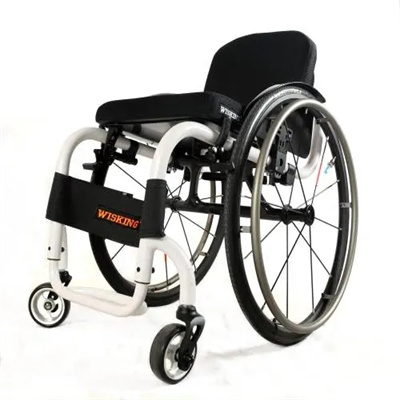The history of wheelchairs is a story of innovation, evolving from rudimentary devices to sophisticated mobility aids designed to improve the lives of individuals with mobility impairments. Here is a brief overview of the history of wheelchairs:
- Ancient Wheelchairs: The concept of the wheelchair dates back to ancient civilizations. Early evidence of wheelchairs includes depictions in Chinese art from the 6th century BCE and references in Greek literature. These ancient wheelchairs were often constructed using wooden wheels and frames.
- 18th Century Developments: In the 18th century, wheelchairs began to appear in Europe. Inventors like John Dawson and Stephen Farfler designed some of the earliest known European wheelchairs. Farfler’s design, from 1655, featured a hand-cranked system for self-propulsion.
- First Patent: In 1869, a patent was granted to James Heath for a design that resembled the modern wheelchair, featuring two large rear wheels and a small front wheel.
- Introduction of the Folding Wheelchair: In 1932, Harry Jennings and Herbert Everest invented the first folding wheelchair, known as the “X-brace” or “crossframe” wheelchair. This innovation allowed for greater portability and ease of storage.
- World War II: The need for mobility aids during World War II led to advancements in wheelchair technology. These wartime developments included lightweight materials and improved designs.
- Post-World War II Advancements: After World War II, there was an increased focus on the design and production of wheelchairs for civilian use. Aluminum and later titanium became popular materials for lightweight wheelchair frames.
- Power Wheelchairs: In the mid-20th century, electric or power wheelchairs were introduced. These wheelchairs are equipped with batteries and electric motors, providing users with the ability to control their mobility with a joystick or other input devices.
- Wheelchair Sports: The mid-20th century also saw the emergence of wheelchair sports, with the first wheelchair basketball game taking place in 1946. Wheelchair sports have since grown in popularity and have played a significant role in changing public perceptions of disability.
- Accessible Legislation: In the latter half of the 20th century, legislation such as the Americans with Disabilities Act (ADA) in the United States and similar laws in other countries mandated accessibility and paved the way for improved wheelchair accessibility in public spaces.
- Customization and Modern Innovations: Modern wheelchairs are highly customizable, with a wide range of options for seat width, seat depth, backrest height, cushioning, and accessories. Innovations in materials, suspension systems, and ergonomic design have made wheelchairs more comfortable and functional.
- Smart Wheelchairs: Recent innovations include the development of “smart” wheelchairs equipped with sensors, GPS, and connectivity features. These wheelchairs can provide real-time feedback to users and caregivers, as well as navigation assistance.
The history of wheelchairs is a testament to human ingenuity and the ongoing efforts to improve mobility and accessibility for individuals with mobility impairments. Today’s wheelchairs offer a wide range of options to suit individual needs and preferences, promoting independence and enhancing the quality of life for wheelchair users.




















